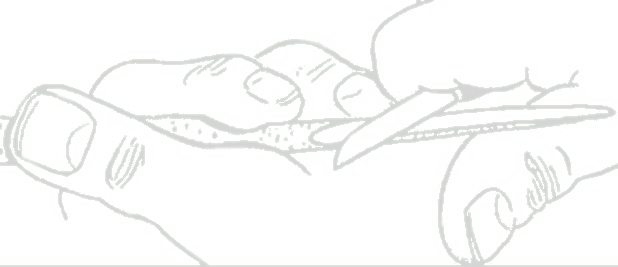Monday, July 6, 2009
No Photo - Just Info!
It's occurred to me that we can borrow some ideas from those who sew. Very beginners in sewing, are not expected to sew up a piece of clothing as their first attempts. The traditional manner in which people learning to sew were "samplers". Before using a sewing machine the learner would practice the hand sewing stitches on a piece of fabric. They would start with the most basic stitch and practice it one after the other, until it became consistent and perfect; then move on to other stitches. In this manner, they learn to manipulate the needle and the fabric to achieve the desired results. They learn the required hand-eye coordination. The piece of fabric that they practiced on became a "sampler".
We in the wood carving area can do like wise. We shouldn't expect a beginner to pick up a knife and carve a figure of Christ or even Santa. What we may want to do is provide exercises that enable the learner to practice the basic knife cuts. Let the learner start with and practice manipulations of the knife and wood. Much can be learned by sitting a spell with a piece of wood and your knife. You will learn the limits of the wood and how the knife best cuts. You learn where the knife tip is at all times. By just sittin and relaxin with a piece of wood and your knife, makin various cuts you can try to and improve each of the basic knife cuts. You will be able to see the difference between clean knife cuts and fuzzy cuts. Learn your knife before trying to carve a figure.
Subscribe to:
Post Comments (Atom)

4 comments:
Tom good idea , you could use that exercise where you carve a ball on the end of 1"x1" stick
of wood , just an idea.
Hal in Seattle
I agree,
Not every woodcarver is born with good tools, knowledge to keep them sharp, or has the remarkable scene to be able to always get the best quality of carving wood,
knowing your tools performance is a must to keep the nicks and cuts to the minimum, knowing how much pressure is appropriate to cut the wood and the difference of over forcing a dull tool to make a cut usually wind up disastrous.
when the wood yealds too soon or splits and the power cant be stopped if your powering down....
practice using just your hand-wrist strength to carve never power the tool from your shoulder or even elbow. the stroke of your hand wrist combo is short and limited when compared to your elbow - shoulder
Wearing protection for a beginner can aid in lessening the severity of most incidents except pokes. knife tips and small palm tools will get through the best of gloves and thumb protection,
keep them chips flying folks
Had a boss one time that when ever anyone complained about the tools they were supplied with, responded thus: "With all the most up-to-date tools,jigs and fixtures; nearly anyone can do a first rate job" "But it takes real talent to do the job with a minimum of tools". Just look at Norm, on the ol' Yankee Workshop.
Good advice Tom. If you remember, I asked you about the fuzzy wood I got with my first carving. Of course, I was using pine until you told me not too!
I have a give away posted. It for a $60. stainles tape despensor! So come on over and take a change!
Post a Comment